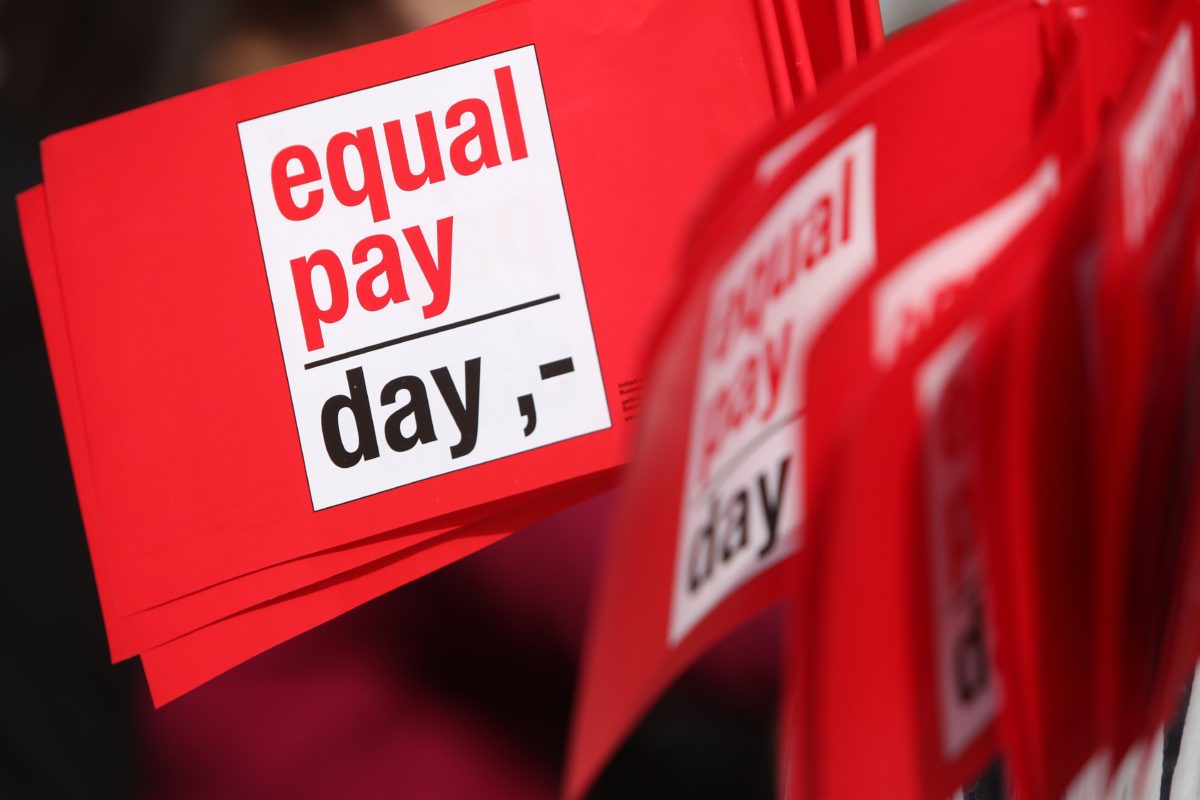Equal Pay Day: Where Black People Rank On The Wage Gap Totem Pole, In 2 Unfortunate Charts

Source: iOne Creative Services / iOne Digital
UPDATED: 3:20 p.m. ET, March 24, 2021
The quest for equal pay – you know, the ideal yet elusive premise that wages be based on ability and not race or gender – has inched closer to being played on a more even field than years past. But as we observe Equal Pay Day, the seemingly unbridgeable earnings gap between men – especially Asians and whites – and everybody else is tough to ignore.
But Black women in particular have it the worst of all American demographics.
Today is #EqualPayDay, when we recognize the wage discrepancies that STILL exist between men and women in the workforce.
— Rep. Stacey Plaskett (@StaceyPlaskett) March 24, 2021
“Since few black women are among the top 5 percent of earners in this country, they have experienced the relatively slow wage growth that characterizes growing class inequality along with the vast majority of other Americans,” according to a study by the Economic Policy Institute, which found that Black women had to work seven months into last year in order to be paid the same as White men the year before. “But in addition to this class inequality, they also experience lower pay due to gender and race bias.”
The optics are damning when comparing the numbers. From hourly wages to annual salaries, “blacks in 2015 earned just 75% as much as whites in median hourly earnings and women earned 83% as much as men,” the Pew Research Center found in 2016, the most recent time statistics were compiled and analyzed.
Today marks how far into 2021 the average woman in the U.S. must work to catch up to what the average man made in 2020.
Pay equity is long overdue.
We must make the Paycheck Fairness Act law. #EqualPayDay
— James E. Clyburn (@WhipClyburn) March 24, 2021
This year has been especially rough on Black workers, what with the COVID-19 pandemic colliding with historically high unemployment numbers. Not only has Black unemployment been on the rise, but a new study confirmed that Black workers are severely underrepresented in high-earning jobs.
The jobs report for February showed that Black workers are being disproportionately left behind by the economic recovery while the opposite was true for other groups. That report came on the heels of another report which found that unless specific measures are undertaken, it will take close to 95 years to close racial gaps in the workplace. On the flip side, a concerted effort to remove the barriers for Black workers could close the gap within 25 years.
Women risked their health on the frontlines of this pandemic.
Women are helping us get vaccinated and save lives.
Women deserve to be paid equally for the same work as their male counterparts.#EqualPayDay pic.twitter.com/73QVbfpFHH
— NY AG James (@NewYorkStateAG) March 24, 2021
But pictures speak a thousand words, and this article only has space for a couple of hundred of them. So we’ve included two charts in particular to provide startling visual examples of the persistent wage gap that’s been leaving Black folks, especially women, behind.
The images are equally unique and brilliant creations by Mona Chalabi, the Data Editor at the Guardian US. Her Instagram page is filled with other amazing illustrations, but these two perfectly hammer home the severity of the wage gap situation facing Black people.
SEE ALSO:
Black Private Sector Workers Underrepresented In High-Earning Jobs, Study Confirms
Black Unemployment Rises During Biden’s First Full Month In Office
[ione_media_gallery id=”3785430″ overlay=”true”]

